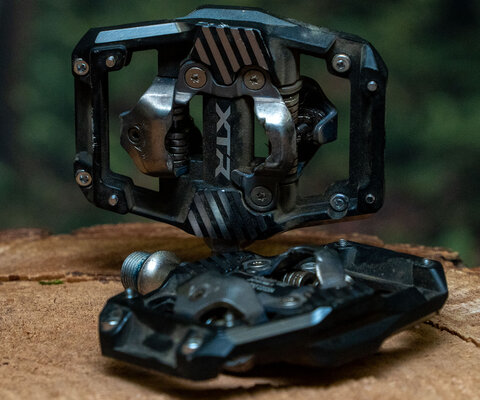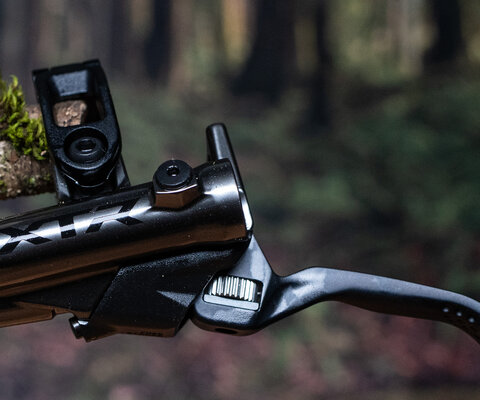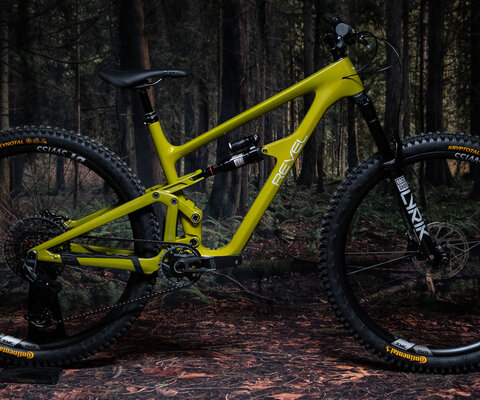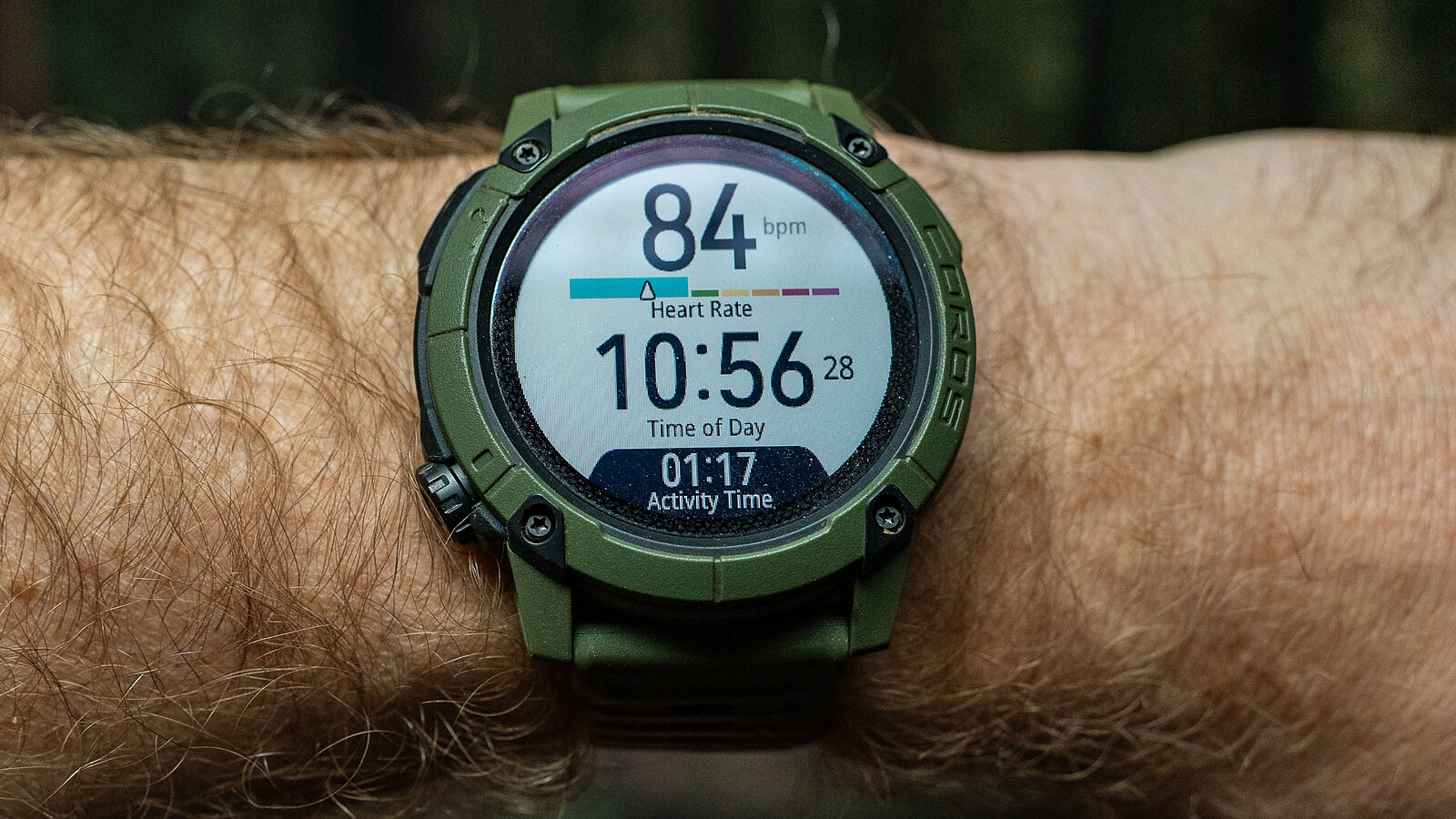
COROS Nomad Watch Sleek and servicable.
Words and Photos by Cy Whitling
COROS has been making steady inroads in the adventure watch space for the last several years. The brand’s watches are a common sight on the wrists of trail runners and ski mountaineers, and last year COROS released its first bike computer, the Dura. I reviewed the Dura when it launched. Short version: its battery life is absolutely absurd, which makes it a compelling choice, but ultimately I reverted back to using the brand’s Vertix watch for most of my riding and mapping. That’s not the Dura’s fault, instead it’s an expression of my relationship with bike computers.
Over the last few years I’ve reviewed several bike-specific computers, including the Garmin Edge MTB, and while I appreciate their ability to display stats and give turn-by-turn directions, I’ve also found that they tend to distract from the riding experience while not really adding any value. After a fair bit of contemplation, I realized that it’s fundamentally a question of the direction of information flow. I don’t want a computer to tell me where to go on a ride. Instead, I want to tell the computer where I went on the ride, and then export that data later to add to my personal map of places I like to ride my bike.
And that revelation leads, tangentially, to the new COROS Nomad. The Nomad is COROS’s latest GPS watch, and it embodies that philosophy, literally. It’s the first COROS watch that comes with the ability to record geo-tagged voice memos in the field, that are then transcribed and added as notes on your exported track.
Of course that’s not all the new Nomad does: it’s got a great battery life, a sleek silhouette, and a bunch of specialized sport modes (who knew that fishing would require so much tracking!?). But at its core, it’s my favorite GPS device I’ve used because it disappears when I want it to, but does a great job of chronicling everything I desire.
COROS Nomad Details
- Interface: Two buttons, one button dial, touch screen
- Internal memory: 32 gb
- Weight: 62 g
- Battery Life: 15 hours to 22 days depending on settings
- Price: $349
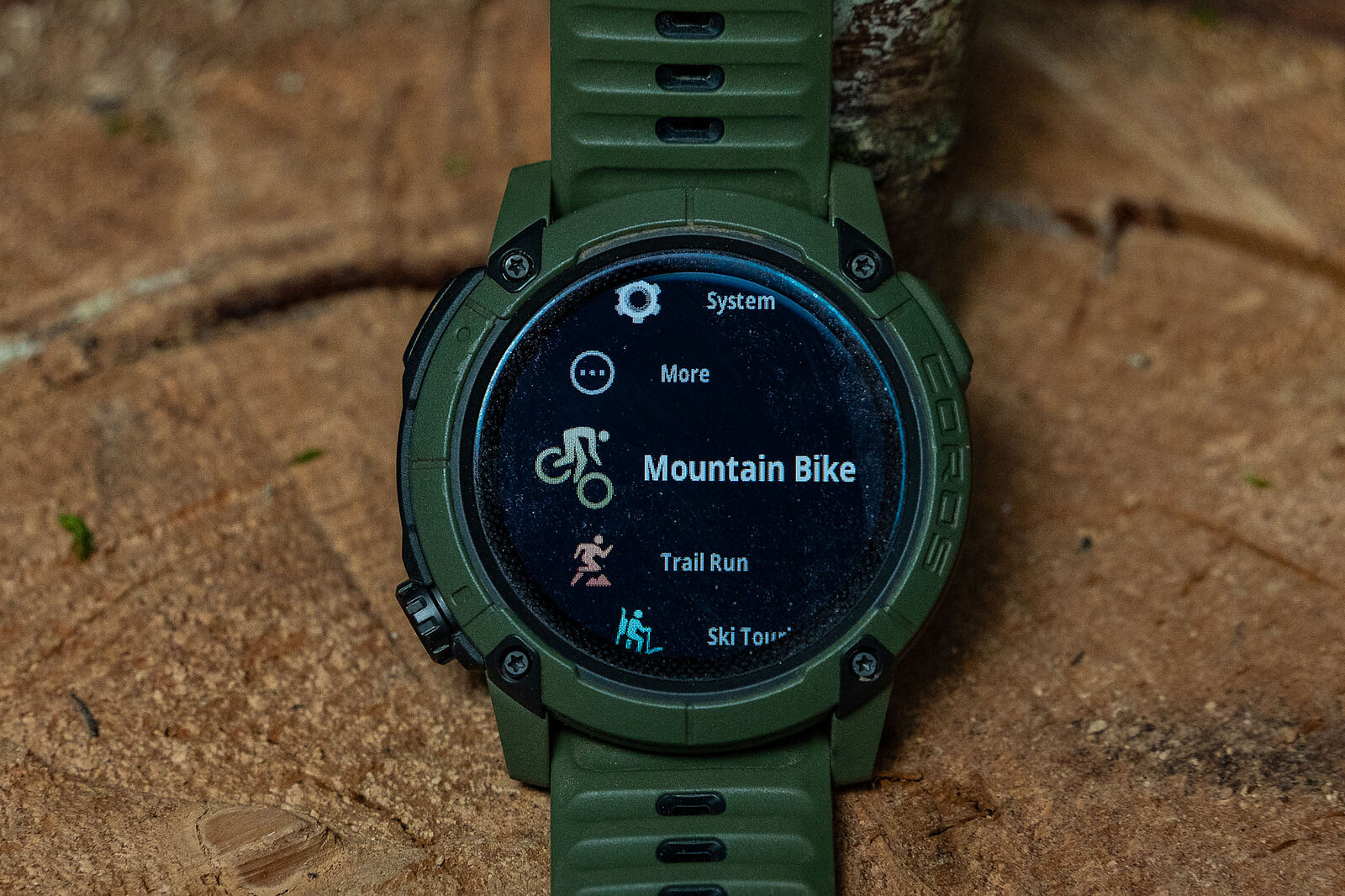
COROS Nomad Features
One of my biggest takeaways from almost three years of using COROS products is that they manage to advertise a huge number of features, but when I’m actually using the products they’re never overwhelming or confusing. It’s pretty easy to figure out what features you will be using consistently, and prioritize them, without having to turn off a bunch of bloat, or navigate through options you don’t care about. So we’re about to dive into a very extensive feature list, and then in the “performance” section, I’ll break down what I actually use regularly.
The Nomad communicates with all five of the common GPS networks, and uses a dual-frequency chipset. You can download both landscape (street) and topo maps, and COROS includes a fair number of navigation features that are fairly usable even on this small screen.
COROS includes a huge range of activity modes, including eight fishing modes. Yes, you can track your catch on your watch. As usual for COROS, you can set up the Nomad to start and stop recording with your GoPro or Insta360, and again, because it’s a COROS, it has absurdly good battery life.
COROS claims that the Nomad will work in normal “watch” mode for 22 days between charges, and track activities for 50 hours in “High” mode. Anecdotally, I can run the Nomad for about two weeks, recording activities about fifteen hours per week, and using it as a watch the rest of the time, before I get anxious enough to charge it, but your mileage will vary based on a bunch of factors. I can get about a month out of the COROS Vertix, but that watch is significantly chunkier, to the point that it gets very uncomfortable on fast, braking bumped descents. In contrast, the Nomad is comfy even during repeated bike park laps.
Finally, the Nomad has a new Adventure Journal (not the magazine) function that allows you to pin photos, notes, and voice memos to your track. Initially I thought this was a bit gimmicky, but in practice I’ve found the voice memos in particular to be fairly useful.

The COROS App
The COROS App continues to be my favorite that I’ve used. It’s unobtrusive, and gives me the data I need, without shaming me about my training habits. Yes. If you want to go full nerd and break into all your data, it’s there, and COROS has plenty of tools to help you parse it and create a training plan.
But, back to that “direction of communication” point from the intro: it’s very easy to go to the activities tab and share anything you’ve recorded as a .GPX or .KML file. Then you can send that file to any other mapping app on your phone. In contrast, if I record a track with a Garmin device, I can’t use the Garmin Connect app to export the .GPX. Instead I have to log in with a browser. It’s so weird, and so frustrating after getting used to the seamless COROS experience.

COROS Nomad Performance
The short version here is that, for mountain bikers, the Nomad performs exactly like you’d expect a COROS watch to perform. It’s quick and easy to set up, and from there, you can easily track rides, and export the data from them to do whatever you wish.
Like the other COROS watches I’ve used, the Nomad has good battery life, and I really appreciate how little I think about charging it. Also like the other COROS watches I’ve used, I tend to get slightly higher vert stats, and slightly lower mileage stats than my friends who record their rides with the Strava app. So if we ride together, my watch says I climbed higher and rode less far than their phone says. I’m not too fused about it, and all signs point to my stats being a little more accurate than theirs. But honestly, knowing those exact stats is not why I record my rides.
I record my rides because I have an absolutely terrible sense of direction. I get lost very easily. I need to have a visual map of where everything goes, where roads connect, and where new trails could, hypothetically go. And the Nomad does a very good job of recording data for that purpose.
I’ve also found that the voice memo feature is a huge value add for that sort of situation. It turns out that there are plenty of situations where I’m wandering around in the woods, trying to find a route, when my phone is way too wet to allow me to use the touchscreen to drop a pin or make a note. And in those situations, it’s very easy to use the Nomad to make a quick voice note, without pulling out my phone or even taking off my gloves.
No, the watch’s audio recording quality is not great, but it’s absolutely adequate, and does a good job of transcribing those notes. And I can think of a bunch of situations, across activities, where the ability to quickly make a geo-tagged note, without taking off any gear or fumbling for your phone has value.

For Now
I keep trying to fall in love with bike-specific computers, to find the one that makes the entire genre make sense for how I ride. But every time I try something new, I inevitably revert back to my old reliable: a COROS watch. The Nomad keeps the features and performance that I so appreciate, while adding more utility to an already impressive package. It won’t be for everyone, but if you’re looking for a less-obtrusive ride-tracking experience with some very clever features, the COROS Nomad is a great place to start.
Learn more: COROS
